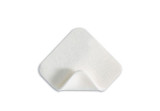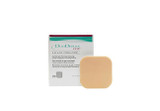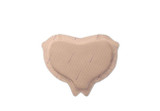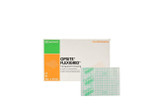Wound Management
Depending on your wound, your dressing may need to be changed every few hours, or it could last up to a few days. You should change the dressing any time you can see visible exudate through the bandage. If your wound site is too saturated with fluid, it can delay healing time. But dry wounds won’t heal nearly as quickly because a moist environment facilitates the healing process and stimulates collagen synthesis. Always make sure that your wound is kept clean to speed up healing and prevent infection.
Types of Wound Dressings
There are dozens of wound dressings to choose from, but some of the most common types include foam dressings, hyrdocolloid bandages, silver wound dressings, transparent dressings, and alginates. The type of dressing you use will depend on things like the size of the wound, its location, amount of exudate, and more. It is important to consult with a healthcare professional to determine which dressing is best for your wound.
Primary and Secondary Dressings
The dressing that is placed directly onto the wound is known as a primary dressing. It is responsible for the majority of wound healing. Primary dressings are available with or without an adhesive border. A dressing with an adhesive border is also known as an island dressing. When choosing the size of your bandage, keep in mind that the absorbent pad of the bandage should cover the entire wound plus an additional 2 inches around the wound. It is important that adhesive does not come into contact with any part of the wound, as this can damage the wound bed. If you're using a primary dressing that does not have an adhesive border, a secondary dressing can be used on top of the primary dressing to help hold it in place. Some examples of secondary dressings include gauze wrap, medical tape, and cohesive bandages.
Foam Dressings
Foam dressings are typically made from a polyurethane material that cushions the wound and are highly absorbent dressings. This makes them appropriate for treating minor burns, infected wounds, and surgical wounds. Some benefits of foam dressings are that they do not produce lint and do not adhere to the wound bed. This prevents trauma to the wound and minimizes pain that can occur during dressing removal. We also carry waterproof foam bandages, which shield the wound from outside moisture and contaminants.
Hydrocolloid Dressings
A hydrocolloid dressing contains polymers, pectin, or other compounds that form a gel when exposed to wound exudate. This locks in moisture and creates an optimal healing environment. Hydrocolloid bandages are flexible, highly absorbent, and are designed not to adhere to the wound. Many hydrocolloids have a waterproof outer layer that repel contaminants. Keep in mind that hydrocolloid dressings should not be use on infected wounds or diabetic patients unless otherwise instructed by your doctor.
Hydrogel Dressings
Hydrogel dressings are a type of wound dressing made from a gel-like substance that contains mostly water. They are designed to provide a moist environment for dry wounds. They can be used on several wound types, including burns, abrasions, and ulcers. They are also available in different forms, such as sheets, beads, and impregnated gauzes. Hydrogel dressings are easy to apply and remove and can be used to cover and protect wound surfaces or fill deep wounds. They can help promote healing, preventing infection, and reducing pain and discomfort.
Antimicrobial Dressings
Silver wound dressings are antimicrobial bandages that are impregnated with ionic silver. The antimicrobial properties make silver dressings ideal for infected wounds. They are designed to slowly release silver into the wound based on the amount of exudate that the wound is producing and the presence of bacteria. Silver bandages can be used as a primary or secondary dressing. Along with standard sheet dressings, Express Medical Supply also stocks a silver wound gel, which provides additional hydration to the wound.
Transparent Dressings
Transparent dressings are made from a thin material that allows you to view the condition of your wound without removing the dressing. This prevents bacteria from entering the wound, which lowers the risk of secondary infection. A transparent film dressing is flexible and easily conforms to body contours. This type of dressing is ideal to use on wounds with little to no drainage, since the film material is not absorbent.
Alginate Dressings
An alginate dressing is made of unique fibers that often come from seaweed. They contain ingredients like calcium and sodium, which create a gelling action when they come into contact with moisture. Not only does this make the dressing very absorbent, but it helps speed up healing time. These ingredients also help protect against infection. Alginates are ideal for use on highly exuding wounds like pressure ulcers, burns, diabetic wounds, and more.
Sacral Dressings
Sacral dressings, also called sacrum dressings, are specially shaped to fit the tailbone area. These dressings are often used by people in wheelchairs or those who are confined to bed. Both of these scenarios put constant pressure and friction on the sacral area, which can lead to pressure sores and skin damage. A sacral dressing cushions the tailbone and surrounding area of the body. They can be used to prevent pressure sores or to help heal existing wounds. We carry hydrocolloid sacral dressings and foam sacral dressings to meet your needs.
Buy Medical Dressing for Wound Care Online
Get all your wound care dressing needs delivered straight to your door by shopping online at Express Medical Supply. Browse a wide range of wound care products, including dressings and topical creams, and place your order with ease.




























